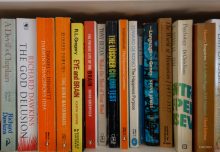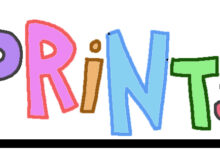Gulley Jimson is a fictional artist created by Joyce Cary in his 1944 book ‘The Horse’s Mouth’.
Memorably, ‘Lust for Life’ a landmark film starring Kirk Douglas as the artist Vincent van Gogh came out in 1956. A couple of years later British filmgoers were introduced to another iconic artist, Gulley Jimson.
In 1958 the book ‘The Horses Mouth’ was made into a film starring Alec Guinness. It was directed by Robert Neame who used real paintings by the kitchen sink artist John Bratby.

Nowadays, Vincent van Gogh is internationally recognized and revered as a truly original artist. But he struggled to succeed with his art during his lifetime. Vincent was an unsuccessful painter who only sold one of his own paintings during a turbulent career. He is especially remembered for a couple of other interesting things, first he cut his ear off, then he committed suicide.
Gulley Jimson is another rebellious, bohemian, lone genius, creating for the sake of creating. He is poor and single. As a student I felt just like that.
I saw both films while I was an art student, and they had a lasting effect on my preconception and understanding of the potential of an artist’s life.
And, I am proud to say, both Vincent and Gulley are still my film heroes. I was inspired by the way that they saw an empty space and dreamed of the painting that could be done on it. In The Horses Mouth it is especially exciting when Gulley notices a blank wall. It happens once in a millionaire collector’s flat and another time in a chapel that awaits demolition. At the close of the film he has cast off and is drifting down the Thames in his houseboat when he is inspired by a huge space on the side of a moored ship that he passes. Cue surging orchestral music, Magic!

The music used in the ‘The Horses Mouth’ film still overwhelms me. It was adapted from Sergei Prokofiev’s “Lieutentanat Kije. Goosebumps.
Here are some online quotations from Google, Wikepedia etc:
…The Horse’s Mouth is a character study of a talented, eccentric artist, who is not only difficult, conniving, uncouth, and thoroughly disreputable, but he is also severely criticized by those who think he’s not any good. Despite the detractors, he maintains his personal vision throughout the story, lording it over all from his dilapidated houseboat moored on the Thames at London’s Chelsea….
…One of Gulley’s quirks, which Alec brilliantly exploited in the screenplay, is his love of working on a large canvas, the larger the better; walls are of particular interest to him. But whatever the size of the painting, he continually modifies and changes it and, even when he has completed the work, he isn’t satisfied with the final effect, “It’s not what I meant,” he says, “not the vision I had. Why doesn’t it fit like it does in the mind?”…
…“I’ll show you how to understand a painting,” says the reprobate artist Gulley Jimson to his on-off lady friend Coker. “Don’t look at it. Feel it with your eyes. Feel the shapes in the flat, like patterns. Then feel it in the round. Feel all the flaws and sharp edges, the lights and the shades, the cools and the warms. Now feel the chair, the bathtub, the woman. Not any old tub or woman. But the tub of tubs and the woman of women.” Coker remains contemptuous of his work, thinking it nothing but obscene….

… Here, unusually, the paintings really do matter. They’re not copies of well-known classics, as in most artist biopics—they were executed by John Bratby, a leading member of the group of English provincial realists who came to be known, rather unfortunately, as the “Kitchen Sink” school. In truth, Bratby would be better described as an expressionist, in view of his vigorous sculpting of paint, even if his preferred subject matter was often domestic. But in The Horse’s Mouth he lends his talent to the tradition of English artists, from William Blake to Stanley Spencer, who wanted to connect the visionary with the vulgar; this is surely what Bratby, Neame, and Guinness do magnificently in the film’s moments of epiphany. Gulley contemplating his sinewy impasto foot by candlelight, or first seeing the wall that will bear his mural masterpiece—these are rare moments when we actually feel something of the artist’s imagination. …
End quotes.
So, 60 years later, has my art career been anything like either Vincent or Gulley?
Not really. I live in a real house with my wife who I met at Hornsey Art College. We have our family close by, with not a houseboat in sight.
We continue to sell paintings and prints from our website artpublish.com.
And I still have both ears.




